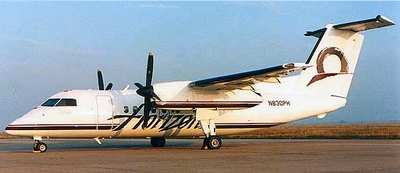Too Little Too Late
The Regional Airline Association (RAA) has applauded the introduction of the Flight Education Access Act introduced by Senators Baldwin (Democrat, Wisconsin) and Sullivan (Republican, Arkansas) and Congressional Representatives Allred (Democrat, Texas); Chavez DeRemer (Republican, Oregon); and Cohen (Democrat-Tennessee).

The bipartisan, bicameral legislation is intended to improve accessibility to pilot careers.
RAA president and CEO Faye Malarkey Black stated: “There has never been a better time to become a commercial airline pilot, nor a time when our country was in greater need of more pilots. Wages and opportunities are soaring … This legislation addresses one of the primary access barriers, which is the high cost of flight education and training and the dearth of federal resources to finance training.”
In 2023, flight training costs—Private Pilot to ATP—average $80,000. Added to the expense of a bachelor’s degree—an employment prerequisite at many major air-carriers—the total cost borne by pilot hopefuls most often surpass $200,000. Notwithstanding extremely high returns on every training dollar, such expenses exceed the ceilings of extant Federal student loans by an average of $80,000. While airlines have in recent years begun offering pilot candidates modica of financial support, many would-be pilots—particularly in the face of record-high inflation and rising interest rates—cannot bridge the gap.
The creators of the Flight Education Access Act contend the legislation will open doors for talented, hardworking young people and help boost the number of qualified pilots. Currently, more than five-hundred regional aircraft have been parked for want of pilots, and small community air service is significantly decreased. Three-quarters (308) of U.S. airports have lost, on average, one-in-four flights. Smaller airports have experienced the greatest harm, with 11 airports losing all of their flights. Subject losses are attributable largely to the poor pay and harsh working conditions historically foisted upon pilots by regional air-carriers.
Between the early 1980s and the late 2010s, low turnover at major airlines occasioned stagnation at all levels of the piloting profession. In the 1990s, landing a flight instructing gig was akin in difficulty to winning a spot on the roster of a Major League Baseball team. In 1996, a large West Coast regional air-carrier offered SIC new hires starting salaries of $1,200 per-month for the privilege of pushing old Dash-8 200s between SEA, GEG, PDX, YVR, BOI, etc. The carrier went so far as to require its new-hire aviators to pay for their own uniforms.

Successive decades of glacial upward mobility, poor pay, and shabby quality-of-life rendered the piloting profession, by degrees, increasingly unattractive. Why, after all, would intelligent, physically capable, ambitious young people sink vast sums of money into demanding and protracted training apt to win them, at best, low-paying right-seat jobs in tired turboprops and dreary existences in shabby SMF crash-pad apartments shared with four coworkers?
Even if the Flight Education Access Act passes into law, the likelihood it will significantly assuage air-carriers’ pilot staffing shortfalls is negligible.
 NTSB Prelim: Lee Aviation LLC JA30 SuperStol
NTSB Prelim: Lee Aviation LLC JA30 SuperStol Classic Aero-TV: Curtiss Jenny Build Wows AirVenture Crowds
Classic Aero-TV: Curtiss Jenny Build Wows AirVenture Crowds ANN's Daily Aero-Term (05.30.25): Very High Frequency (VHF)
ANN's Daily Aero-Term (05.30.25): Very High Frequency (VHF) Aero-News: Quote of the Day (05.30.25)
Aero-News: Quote of the Day (05.30.25) ANN's Daily Aero-Term (05.31.25): Microburst
ANN's Daily Aero-Term (05.31.25): Microburst




